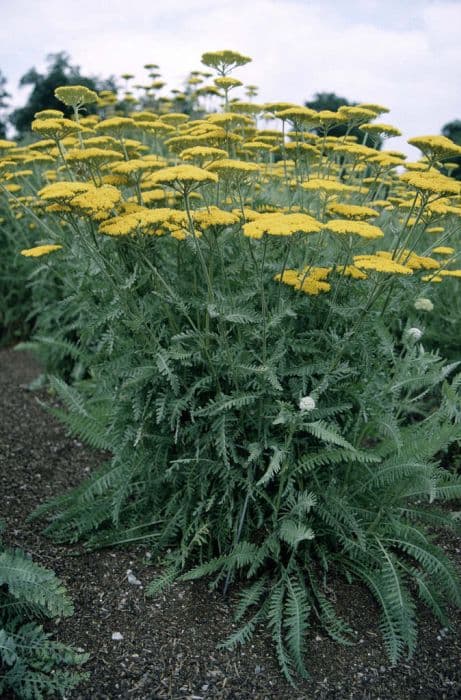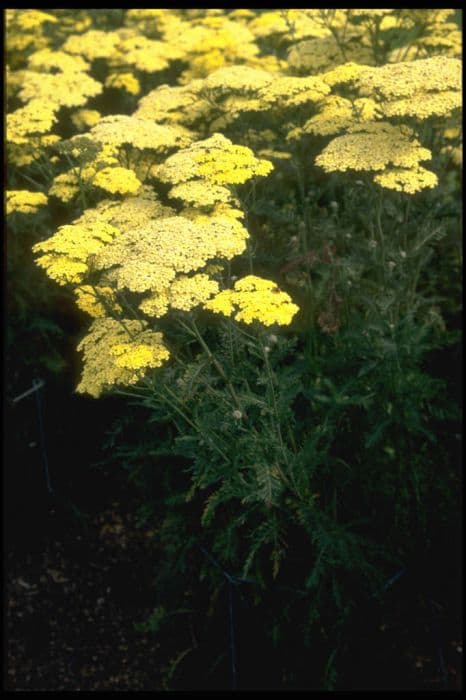Marguerite 'Snow Storm' Argyranthemum 'Snow Storm'

ABOUT
'Snow Storm' is a compact evergreen subshrub to 30cm tall, with grey-green, dissected foliage and yellow-centred white flowers 3cm across
About this plant
 Names
NamesFamily
Asteraceae
Synonyms
Marguerite Daisy, Paris Daisy, Cobbity Daisy
Common names
Argyranthemum 'Snow Storm'.
 Characteristics
CharacteristicsLife cycle
Perennials
Foliage type
Evergreen
Color of leaves
Green
Flower color
White
Height
2-3 feet (60-90 cm)
Spread
2 feet (60 cm)
Plant type
Shrub
Hardiness zones
10
Native area
Canary Islands
Benefits
 General Benefits
General Benefits- Ornamental Value: The Argyranthemum 'Snow Storm', commonly known as Marguerite Daisy, has bright, daisy-like flowers that add aesthetic appeal to gardens and landscapes.
- Long Blooming: This plant typically has an extended blooming period from spring to fall, providing a long season of visual interest.
- Attracts Pollinators: Marguerite Daisies can attract butterflies and other beneficial insects, supporting local ecosystems and pollination of other plants.
- Low Maintenance: It is relatively easy to care for, requiring minimal upkeep once established, which makes it ideal for gardeners of all skill levels.
- Drought Tolerance: Once established, Marguerite Daisy is somewhat tolerant of drought, making it a suitable choice for water-efficient gardening.
- Versatility: Argyranthemum 'Snow Storm' can be grown in containers, borders, or as a standalone feature plant, offering flexibility in landscape design.
- Seasonal Color: Providing bright white flowers, it can be particularly effective for creating contrast in planting schemes or for brightening up dull areas.
 Medical Properties
Medical PropertiesThis plant is not used for medical purposes.
 Air-purifying Qualities
Air-purifying QualitiesThis plant is not specifically known for air purifying qualities.
 Other Uses
Other Uses- Photography Prop: The Argyranthemum 'Snow Storm', with its pristine white flowers, can serve as an elegant backdrop for macro photography and close-up shots of insects like bees and butterflies.
- Special Occasion Decor: Can be used as a natural decoration for events such as weddings or white-themed parties due to its snowy appearance.
- Educational Tool: Horticulture and botany educators can use the plant to teach students about plant care, hybridization, and gardening techniques.
- Mood Enhancement: The bright, cheerful flowers of the Argyranthemum 'Snow Storm' can be used to enhance the ambiance of stress-relief areas, mental health clinics, or spa environments.
- Eco-friendly Confetti: Petals of this flower can be dried and used as biodegradable confetti for celebrations, minimizing environmental impact.
- Artistic Inspiration: Artists can use the flower as a subject for paintings, drawings, and other art forms due to its striking white blooms.
- Seasonal Displays: The plant can be incorporated into seasonal displays, particularly during winter-themed exhibitions to complement the "snowy" aesthetic.
- Floral Crafts: Petals and blooms of the Argyranthemum 'Snow Storm' can be used in making floral arrangements, wreaths, or other craft projects.
- Table Centerpiece: Its compact size and attractive appearance make it a good choice for a natural table centerpiece in homes or restaurants.
- Color Contrasts: The white flowers can be planted or arranged alongside more colorful blooms to create visually striking color contrasts in gardens or floral designs.
Interesting Facts
 Feng Shui
Feng ShuiThe Marguerite Daisy is not used in Feng Shui practice.
 Zodiac Sign Compitability
Zodiac Sign CompitabilityThe Marguerite Daisy is not used in astrology practice.
 Plant Symbolism
Plant Symbolism- Purity: The 'Snow Storm' variety, with its white daisy-like flowers, symbolizes purity due to its clean and crisp color resembling fresh snow.
- Innocence: White flowers are often associated with innocence, and the 'Snow Storm' Argyranthemum, also commonly known as the Marguerite Daisy, is no exception, representing simplicity and straightforwardness.
- Peace: The Marguerite Daisy's calming white hue promotes a sense of peace and tranquility.
- Optimism: Daisies, including the Marguerite Daisy, are signifiers of optimism and positive energy, possibly due to their bright appearance and association with sunny habitats.
- New Beginnings: The Marguerite Daisy, like many other white flowers, is often synonymous with new beginnings, as white is emblematic of a clean slate and fresh starts.
 Water
WaterMarguerite daisy should be watered regularly to maintain evenly moist soil, especially during the heat of summer. Generally, applying about 1 gallon of water per week works well, but this depends on climate conditions, such as temperature and humidity. During particularly hot or dry periods, the plant may require more frequent watering, possibly every few days. It is crucial to water deeply and directly at the soil level, avoiding overhead watering to prevent disease. Cut back on watering in the cooler months, allowing the top inch of soil to dry out between waterings.
 Light
LightMarguerite daisy thrives best in full sun, receiving at least 6 to 8 hours of direct sunlight daily. A sunny spot with some afternoon shade can be beneficial in extremely hot climates to prevent scorching. Avoid deep shade, as insufficient light can lead to poor flowering and a leggy growth habit.
 Temperature
TemperatureMarguerite daisy prefers moderate temperatures and typically fares best between 60°F and 75°F. The plant can tolerate minimum temperatures down to about 30°F for short periods but is not frost-tolerant and will suffer if exposed to prolonged cold. Ideally, keep the plant in an environment where temperatures do not frequently dip below the freezing point.
 Pruning
PruningTo encourage bushier growth and more blooms, the Marguerite daisy should be pruned by deadheading spent flowers regularly. Additionally, light pruning in the spring can stimulate new growth and improve the overall shape of the plant. The best time to prune for shaping is after the last frost but before the onset of new spring growth.
 Cleaning
CleaningAs needed
 Soil
SoilThe Marguerite Daisy 'Snow Storm' prefers a well-draining soil mix with peat moss, perlite, and compost. Aim for a soil pH between 6.1 and 7.3 for optimal growth.
 Repotting
RepottingMarguerite Daisy 'Snow Storm' should be repotted every one to two years, preferably in the spring, to refresh the soil and promote healthy growth.
 Humidity & Misting
Humidity & MistingMarguerite Daisy 'Snow Storm' thrives best in moderate to high humidity levels, but is adaptable and can tolerate lower humidity if necessary.
 Suitable locations
Suitable locationsIndoor
Place in bright, indirect light and ensure good air circulation.
Outdoor
Plant in full sun to part shade, water regularly.
Hardiness zone
9-11 USDA
 Life cycle
Life cycleThe Argyranthemum 'Snow Storm', commonly known as Marguerite daisy, begins its life cycle as a seed, which upon germination grows into a seedling with the basic plant structures. As the seedling matures, it develops a foliage of deeply lobed green leaves and a robust root system. Entering the vegetative stage, the plant grows vigorously, preparing for the flowering phase. The flowering stage is characterized by an abundance of white, daisy-like blooms with yellow centers that attract pollinators and can occur multiple times in suitable growing conditions. After pollination, the plant sets seeds which eventually mature and are dispersed, completing the cycle. During the senescence stage, the plant shows signs of aging and may die back, particularly if it faces harsh winters or is grown as an annual, otherwise, it may enter dormancy if it's being cultivated as a perennial.
 Propogation
PropogationPropogation time
Spring-Early Summer
Propogation: The most popular method of propagation for the Argyranthemum 'Snow Storm', also known commonly as Marguerite Daisy, is through stem cuttings. To propagate Marguerite Daisy effectively, a gardener would take cuttings in late spring or early summer. These cuttings should be about 4 to 6 inches (10 to 15 centimeters) long and should include several leaves. The lower leaves are then removed, and the cut end of the cutting is often dipped in rooting hormone to encourage root development. The prepared cutting is then placed in a well-draining potting mix, ensuring that at least two nodes are buried where leaves were removed. The potting soil should be kept moist, and the cuttings should be placed in a warm, brightly lit area but out of direct sunlight to root. After a few weeks, the cuttings should have developed roots and can be transferred to individual pots or garden beds.









